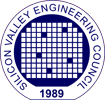Abstract
Tropical butterflies are a bright display of photonic engineering in nature. Their iridescence originates from the interference and diffraction of light within tree-like nanostructures on their scales, inspiring technological innovations in solar cells, displays, fabrics, and other areas. We are inspired by the design principles of these photonic nanostructures to boost performance of gas sensors because existing gas sensors often degrade their performance in complex environments. Thus, new sensing concepts are required to improve sensor selectivity and stability.
In this lecture, we analyze capabilities of natural photonic nanostructures as sensors for detection of different gases and the origins of these capabilities. Our acquired knowledge from studies of these natural nanostructures allows us to develop our design rules to fabricate sensing nanostructures for needed gas selectivity for numerous gas monitoring scenarios at room and high temperatures for industrial, environmental, homeland protection, medical, and other applications.
Our design rules for selective gas sensors bring a multivariable perspective for sensing, where selectivity is achieved within a single nanostructured sensing unit, rather than from an array of separate sensors. By utilizing individual nanostructured sensors rather than sensor arrays we also improved sensor stability by eliminating independent aging factors in separate sensors in their arrays. Our existing and new machine learning tools further advanced our sensor designs and performance in multi-gas detection.
These new multi-gas sensing capabilities provide an affordable technical solution for monitoring of emissions of greenhouse and other gases in urban and industrial environments. Such technical solution is mathematically not feasible using conventional single-output sensor designs. The societal impact of these results is in opening opportunities for more proactive developments of several types of multivariable gas sensors in diverse emerging monitoring applications, ranging from urban pollution and industrial safety to medical diagnostics and homeland protection.
Speaker(s): Dr. Radislav A. Potyrailo ,
Agenda:
6:30 – 7:00 PM Registration & Networking
7:00 – 7:45 PM Invited Talk
7:45 – 8:00 PM Questions & Answers
Room: Conference Center (ECC1), Bldg: Building E, 2900 Semiconductor Drive, Texas Instruments, Santa Clara, California, United States, 95051, Virtual: https://events.vtools.ieee.org/m/435029
Exploring natural and bio-inspired photonic nanostructures as gas sensors

- This event has passed.

